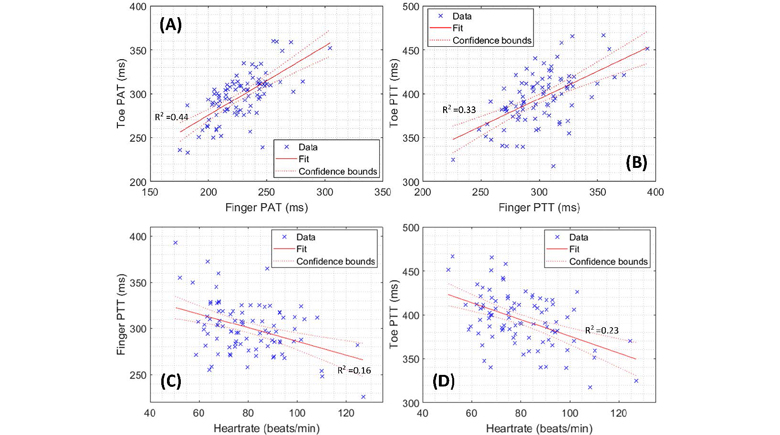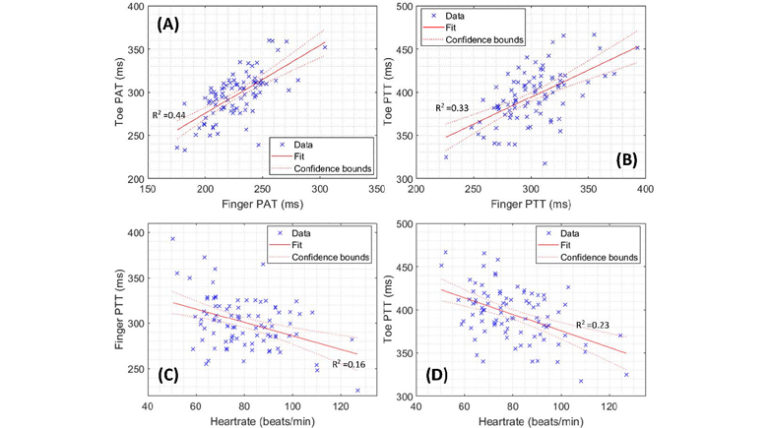
Sex plays an important role in the normal cardiovascular system function including resting heart rate and arterial blood pressure. In addition, it has been reported that men and women are at different levels of risk for cardiovascular diseases. The aim of this study was to evaluate and compare the temporal and morphological features of both finger and toe photoplethysmography (PPG), and anthropometric and biological parameters with respect to sex. A customized PPG and electrocardiography (ECG) combo device was developed to measure the signals of interest. ECG/PPG features in addition to subjects’ information were compared regarding finger and toe PPGs. Eighty-eight subjects participated in the study. Linear regression and Student’s t-test were used for statistical analysis. Our results revealed that pulse arrival time (PAT), pulse transit time (PTT), systolic pulse transit time (SPTT), and the ratio of areas under the PPG waveform from the onset to the inflection point and the inflection point to the end of the waveform (S2/S1), are dependent on sex. The highest dependence was shown for the finger PTT while the toe PTT did not indicate any significant dependence on sex. This is the first study that evaluates the effect of sex on cardiovascular system function using finger and toe PPG based features which can help to understand sex-based risk factors for cardiovascular diseases and to improve related disease management and treatments.

